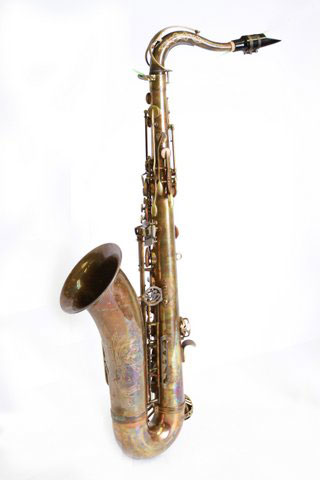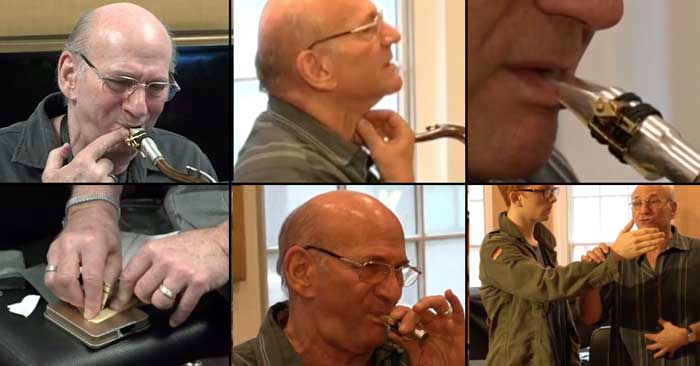Test Drive Results for Sax Dakota’s Latest Tenor
 Introduction
Introduction
After test playing the Sax Dakota SDT-XR-92 at the 2015 NAMM show, Pete was nice enough to send me one to try out for a few days and gain a better understanding of what this horn has to offer. I will be reviewing the Sax Dakota SDT-XR-92 tenor saxophone based on the following criteria: Response, Sound & Intonation, Action, Build Quality, and finally concluding with my overall thoughts and recommendations.
Response
I found the XR-92 to be free blowing with not too much resistance from low Bb to high F#. I did find that the altissimo range took some adjustment to clearly voice high G, G#, A, etc. but with the use of other false fingerings, I was able to play these altissimo notes consistently and in tune.
Sound & Intonation
I found this tenor for myself played on the darker side compared to other Sax Dakota model saxophones. I found that the sound was centered and projected well overall without being too spread. With regards to intonation, from low Bb to high C# while working through long tones, overtone exercises and arpeggios, the XR-92 responded well without much effort to maintain a stable pitch. When I started playing from high D to high F#, I found that I needed to adjust my embouchure because I found the pitch to be on the sharper side. After some adjustments as well as playing through my exercises again, I was able to play the palm keys to high F# in tune and figured out that some fingers on my current setup did not work as well on the Sax Dakota and vice versa.
Action
I found the action on this tenor to be very tight. My personal preference would be to take this horn to my local repairman and have the spring tension lightened, but for shipping purposes and making sure the pads are sealing accordingly, I understand why the action would be on the tighter side. The key-work felt comfortable from high G to high F# in terms of the key spacing was compact and I found this made it easier to navigate through the palm keys and altissimo more fluidly. The lower stack felt good as well but my two suggestions would be to open up the Eb key or raise the Eb key guard because the Eb felt a bit stiff, and this made it a bit difficult when playing chromatically. In addition, I would like to see a bit more of an extension on the low Bb key.
Build Quality
Some of the build quality features you will find on this model are the double arms on the low Bb, B, and C key, pro leather pads with plastic resonators, black oxide needle springs, rose brass, black mother of pearl key touches, stainless steel key rods, and a metal thumb rest to name a few. When I received the XR-92 it seemed that someone had gone through the saxophone to make sure the pads were seating well with the tone holes, and the action was fluid throughout the entire range. I found the un-lacquered bronze brass material felt sturdy and overall it looked like a worn vintage horn. The floral like engraving on the bell, bow, and neck were done by hand, and the material allows the engraving to really stand out on the horn with a copper-ish color.
Overall Thoughts & Recommendations
I found the Sax Dakota SDT-XR-92 embodied many features that players have come to expect in a professional level saxophone. I personally would prefer this model without the high F# key and to also have metal resonators. In regards to the saxophone case, it is a “vintage” looking hard shell case which is great for local gigs, but from the traveling players perspective he or she would have to purchase a flight bag because unfortunately you would have difficulty getting this case on the plane and if you decided to check your bag, you might as well start praying that your saxophone does not make it to your final destination in multiple pieces.
I wanted to thank Pete again for sending me the SDT-XR-92 to test play and if you have any questions, feel free to leave any comments, or check out the website below.
http://www.saxdakota.com/index.html






August 29, 2016 @ 10:05 am
Its a horn I am seriously considering buying, hopefully in the not too distant future. Got a cool message from Pete ; he seemed glad to hear the vibe was reaching the UK. The one thing I do want to know is….where are they made !??
November 3, 2016 @ 10:41 am
These are made in Taiwan